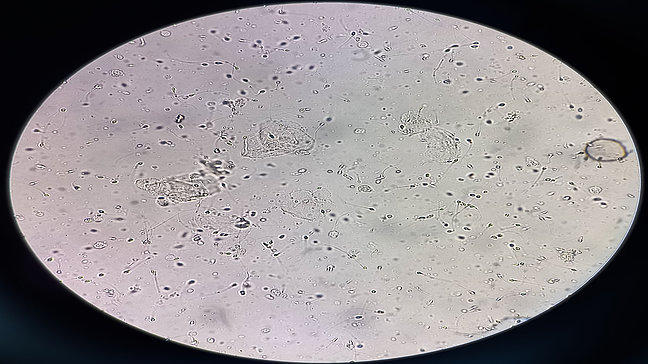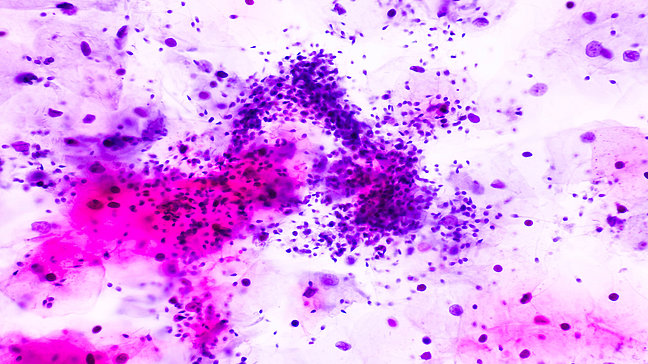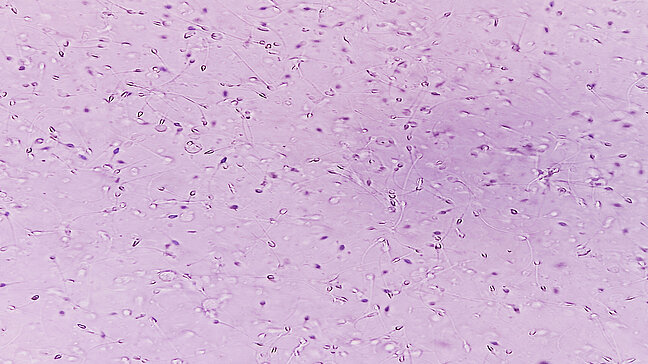
Azoospermia
Causes of Azoospermia
The causes of azoospermia depend on the type of condition:
Obstructive azoospermia: This form is caused by a blockage or obstruction in the seminal pathways. The causes can be congenital malformations, infections (e.g., epididymitis), injuries, or previous surgical procedures such as vasectomies.
Non-obstructive azoospermia: This type is due to problems with sperm production in the testes. Possible causes are genetic disorders such as Klinefelter syndrome, testicular failure, hormonal disorders (e.g., hypogonadism), or harmful influences such as chemotherapy, radiation, or toxins.
Symptoms of azoospermia
Azoospermia usually does not cause any obvious physical symptoms, except for the inability to conceive children naturally. In some cases, underlying hormonal disorders, genetic anomalies, or testicular problems can lead to additional symptoms, such as:
- Swollen or painful testicles
- Decreased libido or erectile dysfunction
- Signs of hormonal disorders such as reduced body hair or gynecomastia (enlargement of the breast glands)
Diagnosis of Azoospermia
The diagnosis of azoospermia begins with a semen analysis, where the ejaculate is examined for the presence of sperm. If no sperm are found, further tests can be conducted to determine the cause:
- Hormone tests: Blood tests to measure testosterone, LH, FSH, and other hormones to detect hormonal disorders.
- Ultrasound of the testes: This test can help identify structural abnormalities such as tumors or blockages in the spermatic ducts.
- Genetic tests: If genetic causes, such as chromosomal abnormalities, are suspected, karyotype analyses or specific genetic tests can be performed.
- Testicular biopsy: If non-obstructive azoospermia is suspected, a testicular biopsy can be performed to determine if sperm are being produced in the testes but not reaching the ejaculate.
Treatment options for azoospermia
The treatment depends on the underlying cause of azoospermia:
- **Surgical correction**: In cases of obstructive azoospermia, surgery can be performed to remove the blockage in the seminal pathways or to reverse a vasectomy.
- **Hormonal treatment**: In cases of hormonal disorders, hormone therapies can help restore sperm production.
- **Assisted reproductive techniques (ART)**: In cases of non-obstructive azoospermia, a testicular biopsy can be performed to obtain sperm, which can then be used for procedures such as in vitro fertilization (IVF) or intracytoplasmic sperm injection (ICSI).
- **Treatment of infections**: If infections are the cause of azoospermia, antibiotics may be prescribed to treat the underlying condition.
Preventive measures for azoospermia
There is no specific way to completely prevent azoospermia. However, the risk can be reduced by avoiding environmental toxins, radiation, and other harmful influences that could damage the testes, as well as by early treatment of infections and hormonal disorders. Regular medical check-ups are important to detect potential problems early.
Common Patient Questions About Azoospermia
The treatment options depend on the cause. In some cases, medical or surgical therapy can restore sperm production. For other causes, assisted reproduction, such as retrieving sperm directly from the testicle, may be considered.
In addition to the sperm analysis, hormone analyses, genetic tests, and imaging techniques are often used to determine the exact cause.
Yes, genetic anomalies such as Klinefelter syndrome or Y chromosome deletions can cause azoospermia.
A balanced diet can support overall health and fertility, but its direct effect on azoospermia is limited.
The diagnosis can be emotionally distressing and evoke feelings of grief or inadequacy. Psychological support or counseling can be helpful in such cases.
![[Translate to English:]](/fileadmin/_processed_/1/d/csm_UZ-Logo-2024-breit-aK-1500px-white-red_4b49b8d28c.png)


